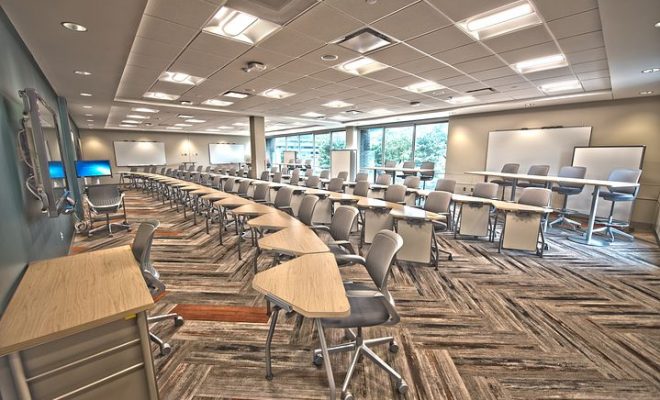The A-Z of EdTech Literacy: Letters C-F

Click here to access all of the articles in this series.
In this series, we are discussing all of the terms, concepts, and technologies that you need to know to be literate in all thinks edtech. In the previous article, I introduced letters A-B and in this one, I will discuss letters C-F.
Cloud computing. When it comes to greater educational collaboration, cloud computing has unlimited potential. This is true for teacher-to-teacher, teacher-to-parent, and teacher-to-student applications. By using a common location, academic expectations can be better accessed, along with actual student work. Instructors can also share learning materials and experiences through the remote opportunities that cloud computing provides.
Cognitive tools. refers to programs and applications, such as word processors, spreadsheets, and email. When used effectively in a classroom setting, they improve the learning process, enhancing thinking and understanding, and often removing some of the manual effort required in performing tasks.
Cyberspace. is a metaphorical concept referring to the world of information provided through the Internet.
Customized learning experiences. Self-initiated and self-directed learning experiences are based on the needs, preferences, and abilities of individual students. The traditional way to look at learning is via the creation and assignment of work by teachers in a one-size-fits-all approach for every classroom. Customized learning, however, allows students to direct focus on feedback techniques that provide strategies for improvement during the process, instead of waiting for a given test period see if the methods are working.
Digital divide. refers to the societal division in which all people do not experience the same degree of access to modern digital information and communication technologies (ICT), particularly on the basis of their socioeconomic status.
Digital native. is a person who has been raised in an environment of digital technology- such as the use of computers, the Internet, mobile phones, and MP3s.
Flipped classroom. The traditional model of teachers lecturing in the classroom and students completing practice and homework on their own is changing. Instead, students are learning on their own and using the classroom as a place to dig more deeply into what they’ve learned. This model, known as the flipped classroom, is gaining popularity thanks to the rise of EdTech. How does the flipped classroom work? Students watch lecture videos or complete readings at home. The following day in class, the teacher clarifies anything students didn’t understand. Students then work with the information to answer questions, complete projects and do other activities that used to be reserved for homework. The flipped classroom provides benefits for students and teachers alike. Teachers spend more time helping students with the content they don’t understand. This means more one-on-one help for students and less time listening to boring lectures in class.
Freemium models. Following the successful mobile gaming application business model, ed-tech companies are starting to offer free services with paid upcharges. Consider Candy Crush Saga way of doing business. Anyone with a smartphone, tablet or desktop Facebook access can download the game at no cost. As users progress through the addictive, sugar-laden levels, they are prompted to make small purchases (usually between 99 cents and $3) to gain access to higher levels, add more lives or buy level “boosters” to help their luck. But giving away a product for free? What sort of business sense does that make? In the case of Candy Crush, it has proven to be savvy indeed. The game’s owner King brought in $1.9 billion in revenue in 2013 and its initial public offering earlier this year was valued at $7 billion.
Well, that’s it for C-F. Did we miss any?






